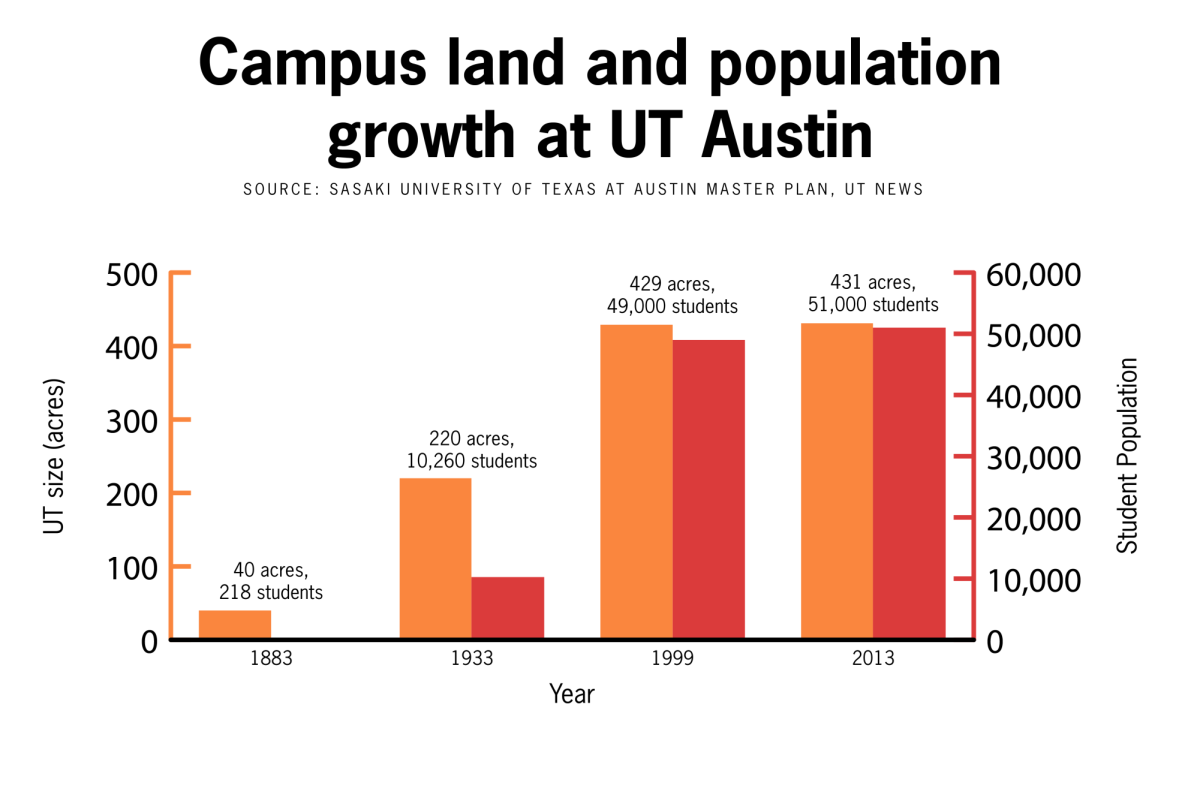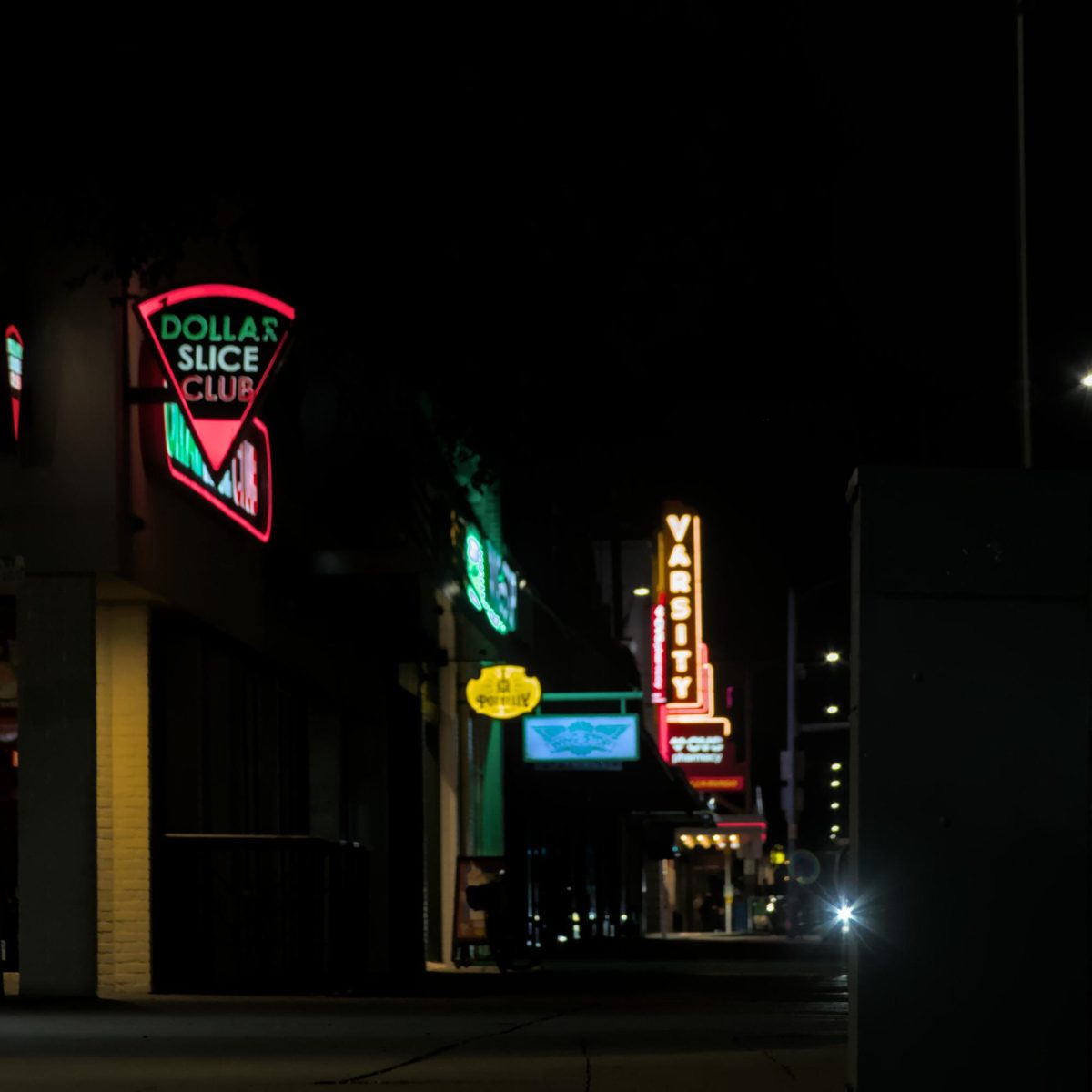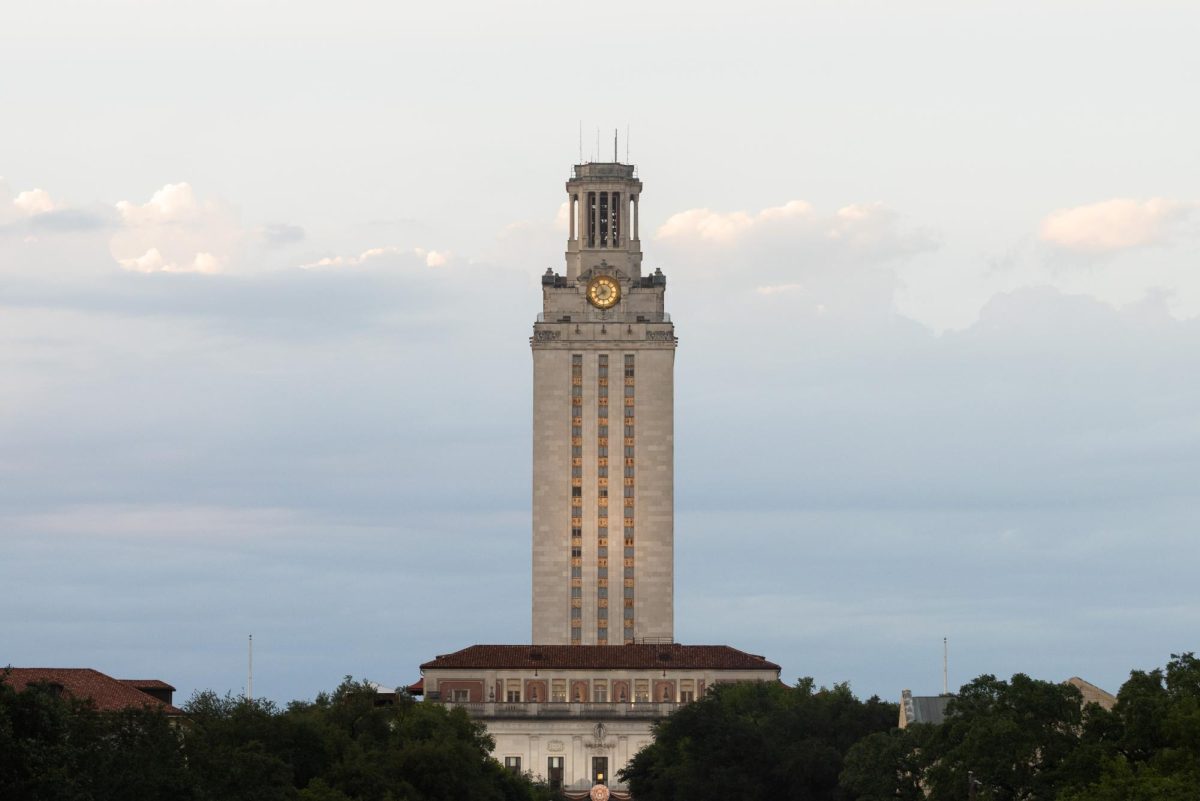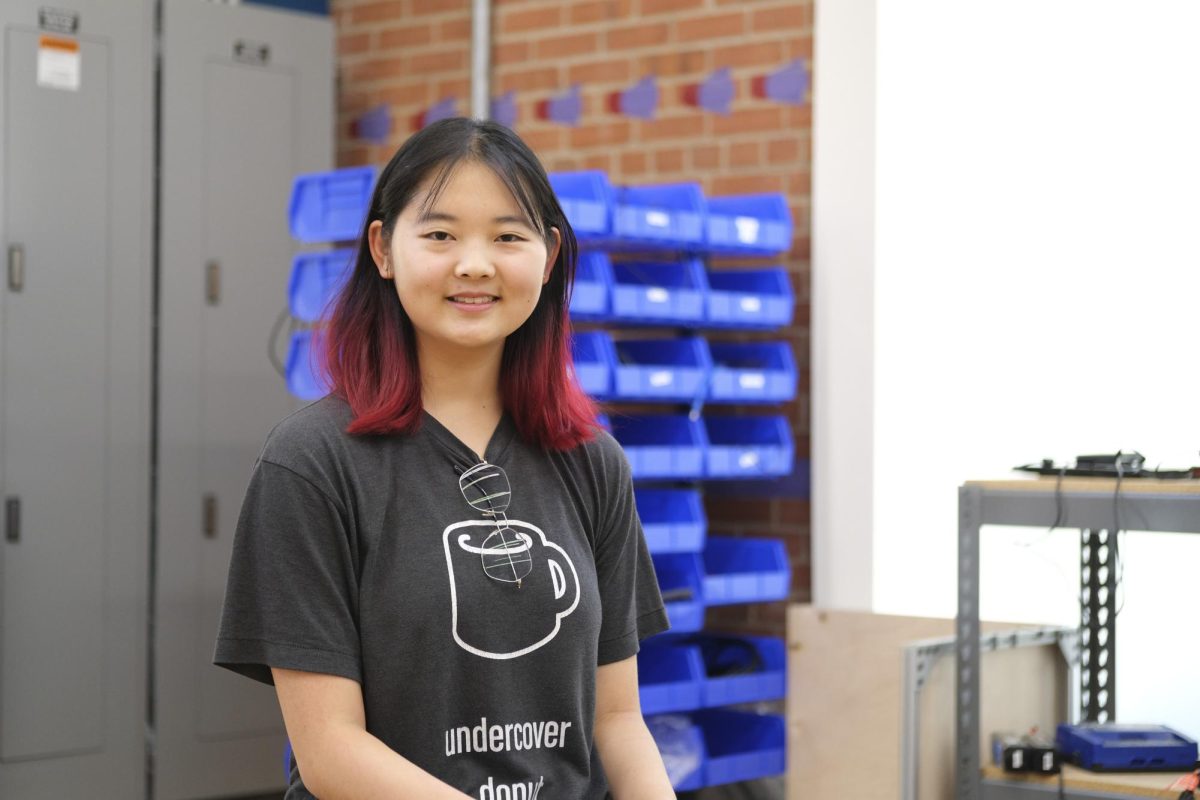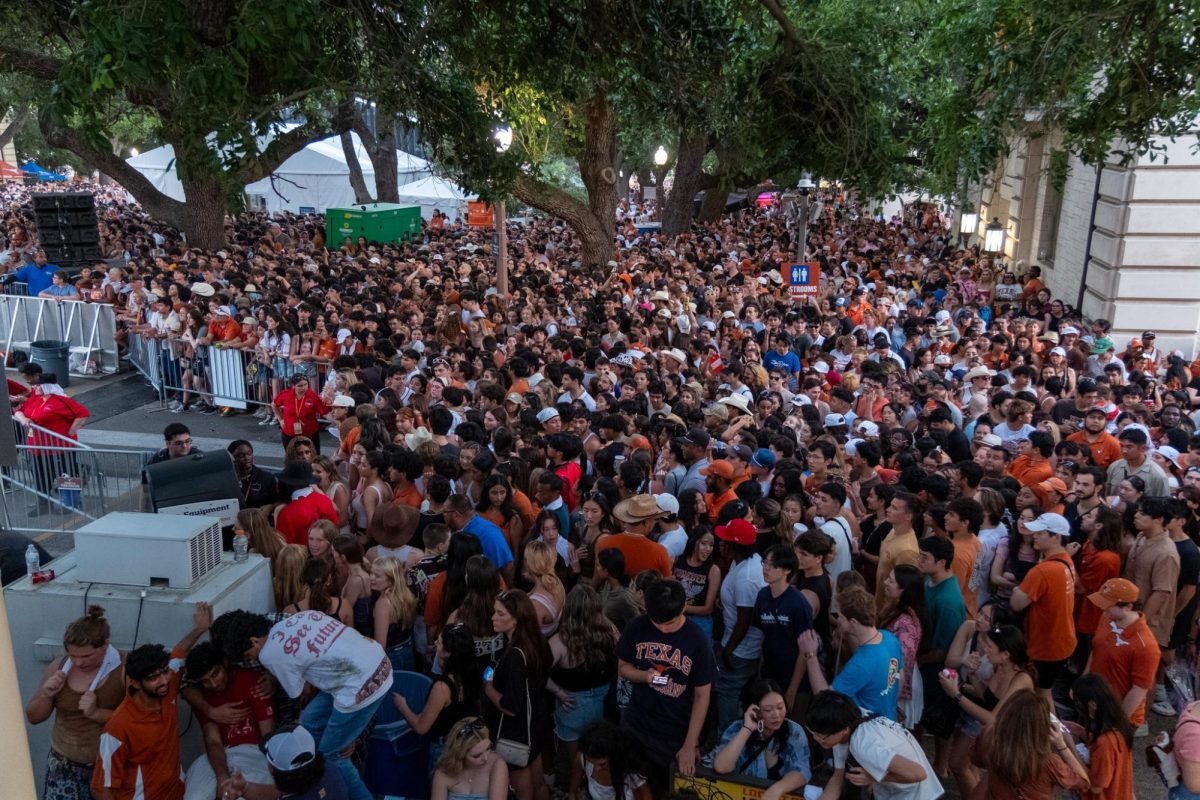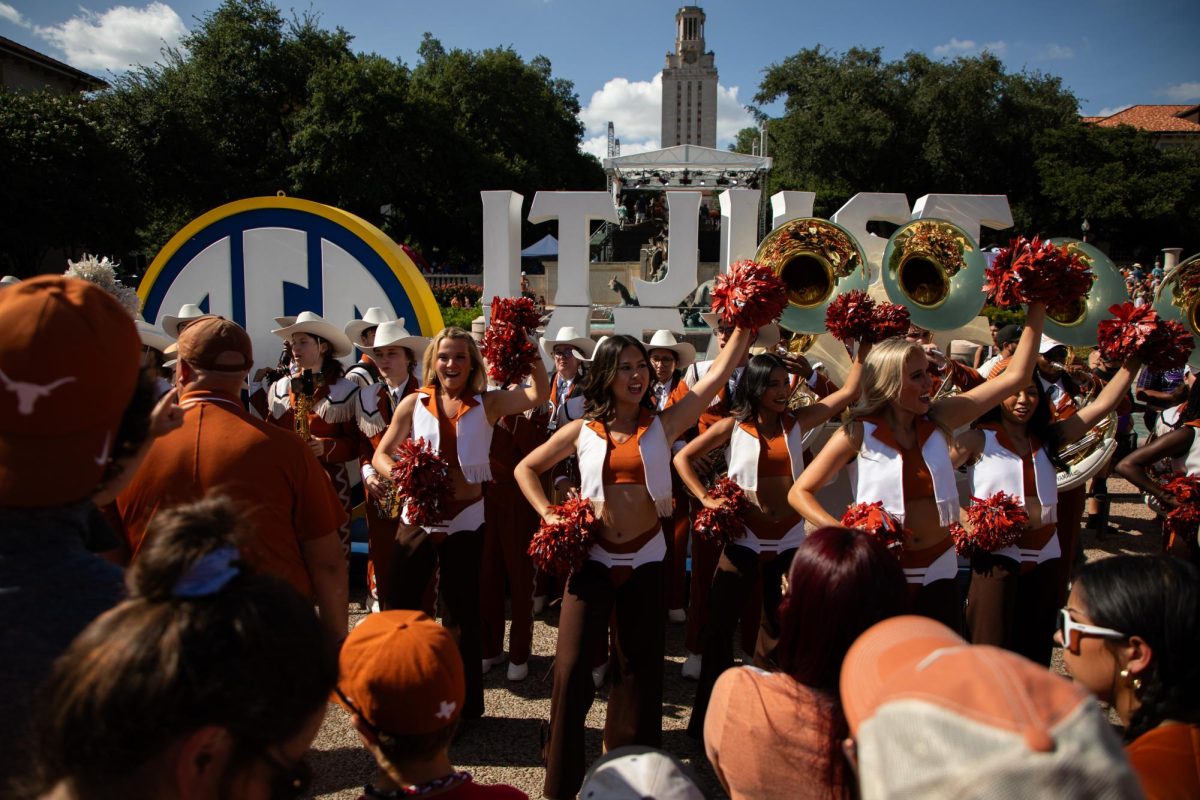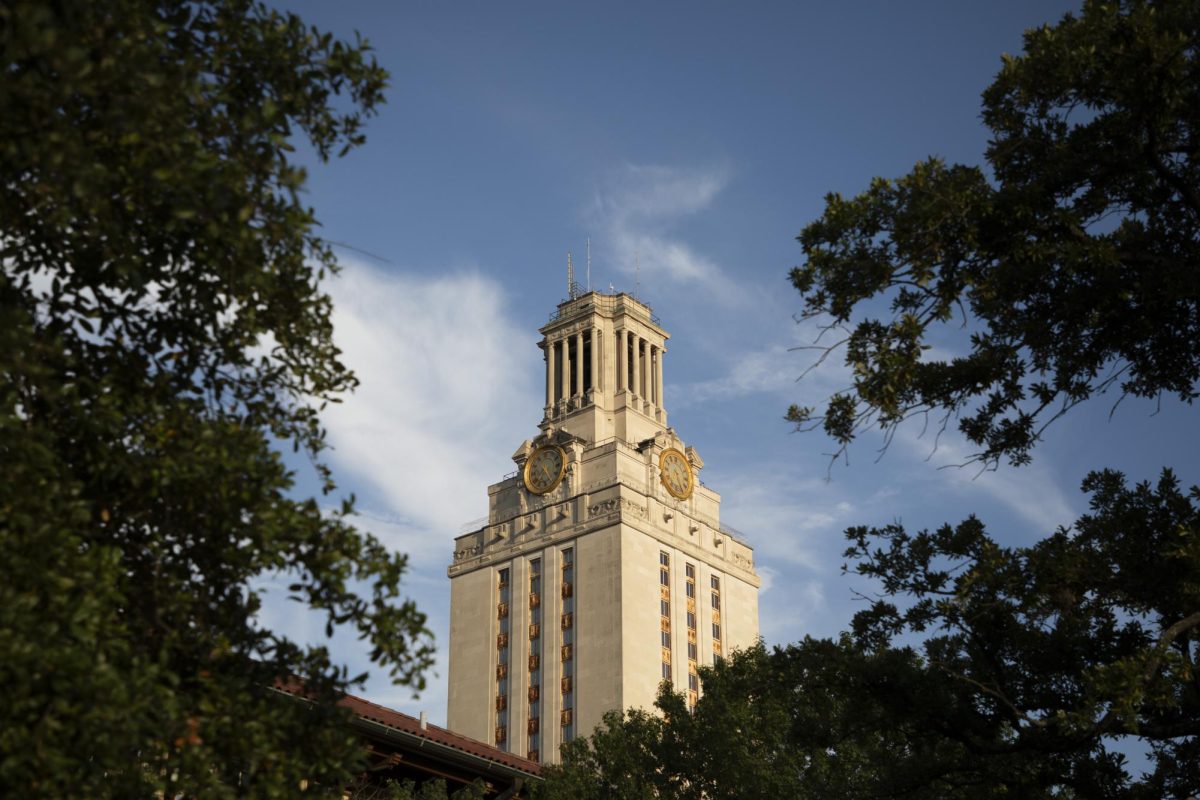Under pressure to lead the largest public education system in the nation, the iconic Forty Acres opened to UT students in the fall of 1883. One hundred forty years later and almost 400 acres larger, the University is still striving toward this vision through the actions outlined in its Campus Master Plan.
Developed in 2013, the current Campus Master Plan details plans for spaces and partnerships, including gaining about 150 acres through land acquisition, building the now-complete Dell Medical School, and adding academic facilities to West Campus.
The Campus Master Plan was approved by former University President William C. Powers, and in the following years that included major shifts like new leadership under President Jay Hartzell and the COVID-19 pandemic, some administrative priorities have changed.
For example, this year UT announced plans to build a football practice facility on the site of the Steve Hicks School of Social Work, a project not reflected in plans from 2013. But despite ongoing adjustments, the current Campus Master Plan is the latest overview of the University’s planned development across campus.
While broad, the plan includes practical infrastructure recommendations like relocating the football practice and tennis facilities, installing bicycling lanes, investing in the revitalization of Guadalupe Street and expanding east of Waller Creek.
This master plan is the third notable one approved at UT, building on the original 1933 plan that implemented the Spanish-inspired architecture and open courtyards and the 1999 version that connected campus using the North, South, East and West Malls.
In the 1930s, state grants and private donations allowed UT to expand rapidly into Austin, a city that did not have the best interests of all its residents in mind. The Austin City Plan of 1928 segregated the city by only allowing Black families to access municipal services and public education in a small district in East Austin.
Urban studies professor Jake Wegmann said the lack of city resources for non-white families who remained in downtown Austin made it much easier for UT to forcibly buy them out of properties that were ballooning in value in the 1950s and 1960s.
“A lot of those (neighborhoods) just got wiped off the map to make way for the expansion of UT,” Wegmann said.
The University partnered with the Austin Urban Renewal Agency in 1957 to build new research facilities as part of “urban renewal” projects supposedly meant to repurpose low-income districts. UT instead used the funding it received through the partnership to expand its football stadium into a neighborhood east of campus called Blackland, displacing over 1,000 residents in the process.
Blackland resident Betty Ussery recalls being forced out during UT’s expansion because of eminent domain, a process where local governments can approve private property claims for public use. Since her house was the only one left on Leona Street, she faced pressure to sell it so that the University could expand onto her block.
“I lived on Leona for five years,” Ussery said. “That’s when UT came in and then, all at once, I had to move. I even got in touch with the lady that owned the house (I lived in) … and she told them, ‘No, I’m not going to sell your university my house,’ but money talks.”
UT began buying more Blackland property up to Chicon Street in the 1980s, claiming nearly half of the neighborhood’s land. However, the community-led Blackland Community Development Corporation reached an agreement with UT in 1992 to keep 16 houses and eight vacant lots intact.
Even after this agreement, however, Ussery believes the damage done to property values in the area has continued to take its toll on residents.
“I’ve seen a lot of elderly people move out, and they moved out only because they cannot pay the taxes,” Ussery said. “Elderly people like myself, they live on a fixed income. That money’s not going to go too far.”
The Blackland CDC spent the next several years creating a program to house displaced residents, including Ussery, and working with UT until it established an official boundary at Leona Street in its 2015 East Campus Master Plan. Blackland CDC Executive Director Andy Bucknell says a strong partnership with UT means a lot to the organization.
“Jim Walker, (the University’s director of sustainability), has been really great about reaching out to us and keeping us involved with this next process of expansion that’s coming through,” Bucknell said. “We want to make sure that people aren’t forgotten, that that history is not erased.”
UT’s next wave of expansion is part of its effort to keep up with an evolving Austin. The Campus Master Plan factors in a San Jacinto Boulevard route for the city’s incoming light rail system and the creation of West Campus dorm spaces as housing costs rise and undergraduate enrollment has grown.
Student government representatives have spent more than a year urging administrators to act on a proposal to immediately add residence halls on university land identified as ideal in UT’s Student Life Master Plan.
Wegmann said he agrees that instead of further imposing on neighborhoods, the University should focus on more efficiently using its current land.
“The eastern side of campus is riddled with parking lots, and there’s just no need to have so much parking, so the University can use that more intensively,” he said. “There are seemingly random grassy areas not being used as parks, they’re just decorative lawns that serve no real purpose.”
Chemical engineering junior Roger El-Bitar, who now lives in West Campus and grew up only 10 minutes from campus in South Austin, also believes UT should refrain from pushing further into existing neighborhoods in a city that is already “jam-packed.”
“If they do want to expand, build up not out, especially when you have a denser population and there’s a lot of space on campus that’s underutilized,” El-Bitar said.
Going forward, El-Bitar hopes UT’s planned improvements will translate into change in West Campus.
“Lighting is a big (improvement area) for safety,” El-Bitar said. “One more thing would be having a bus exclusively for UT students that shuttles between (East and West) Campus.”
Bucknell also looks forward to action from UT in supporting the Blackland. UT’s Diversity, Inclusion and Equity plan aims to “ensure that (the University) recognizes and learns from our history and reflects our values through our campus symbols” but makes no mention of the neighborhood’s history, which Bucknell said he hopes to discuss with UT along with other ways the University can help the community.
“We appreciate what was given, but a lot of people’s lives were destroyed and it’s hard to put a dollar amount on that,” Bucknell said. “There really is an opportunity to do so much more to help support the communities here.”



